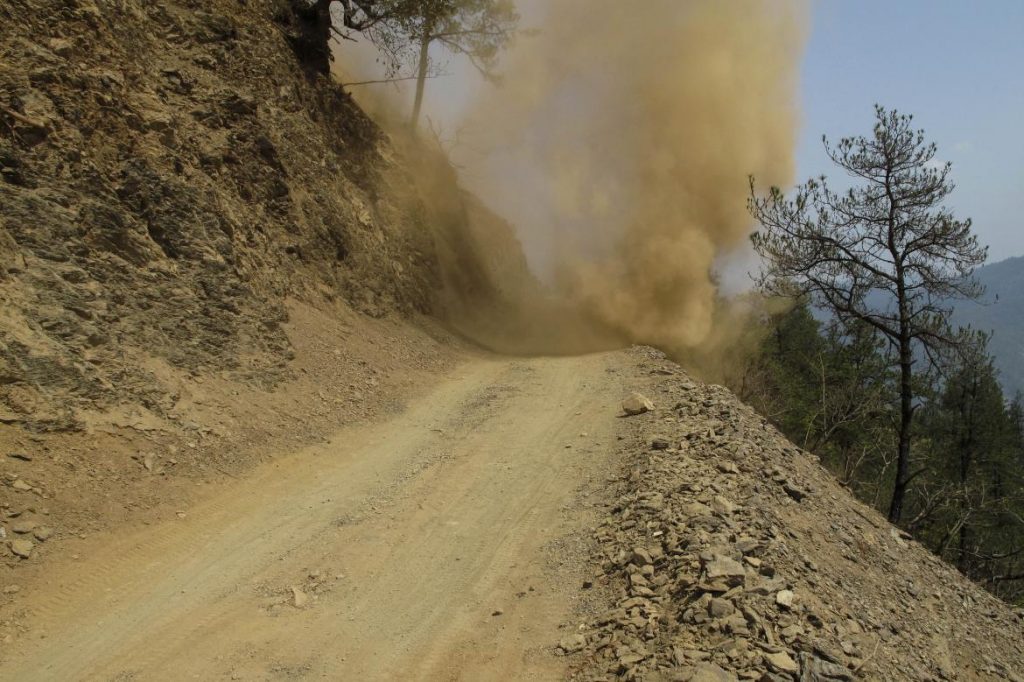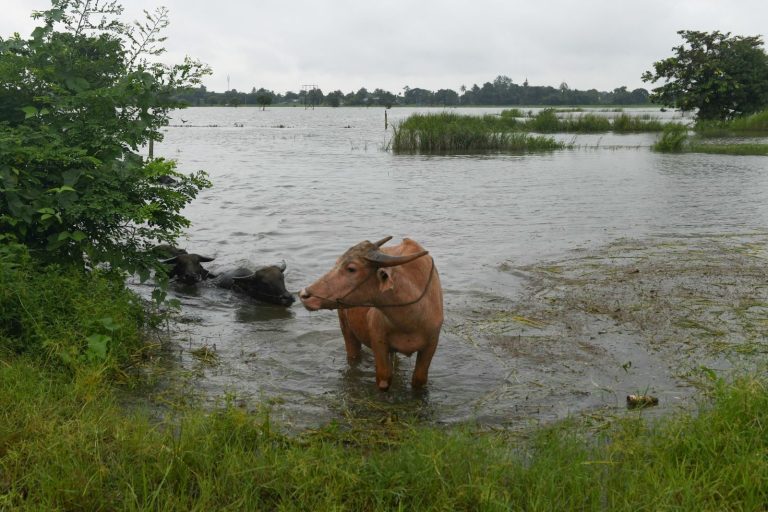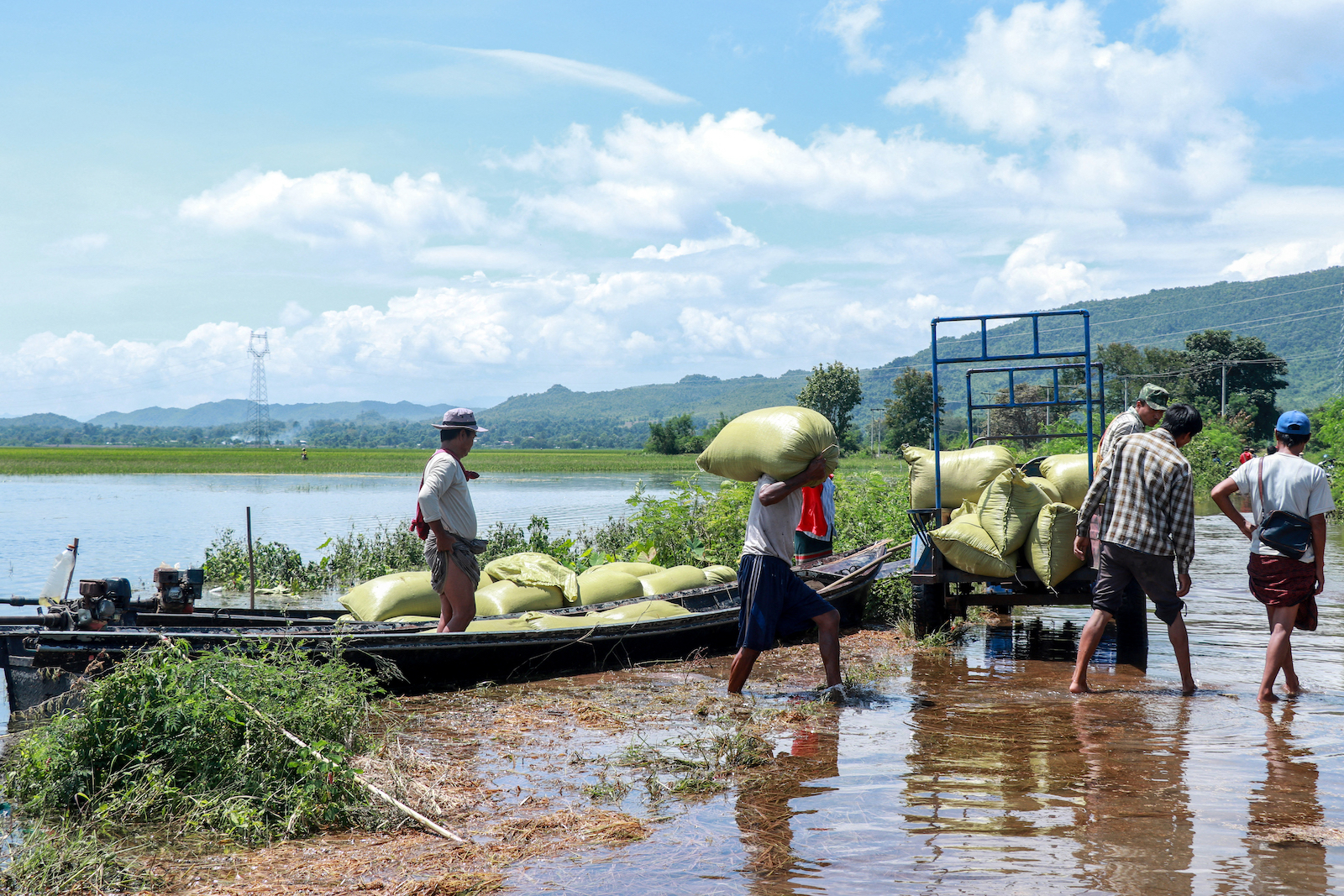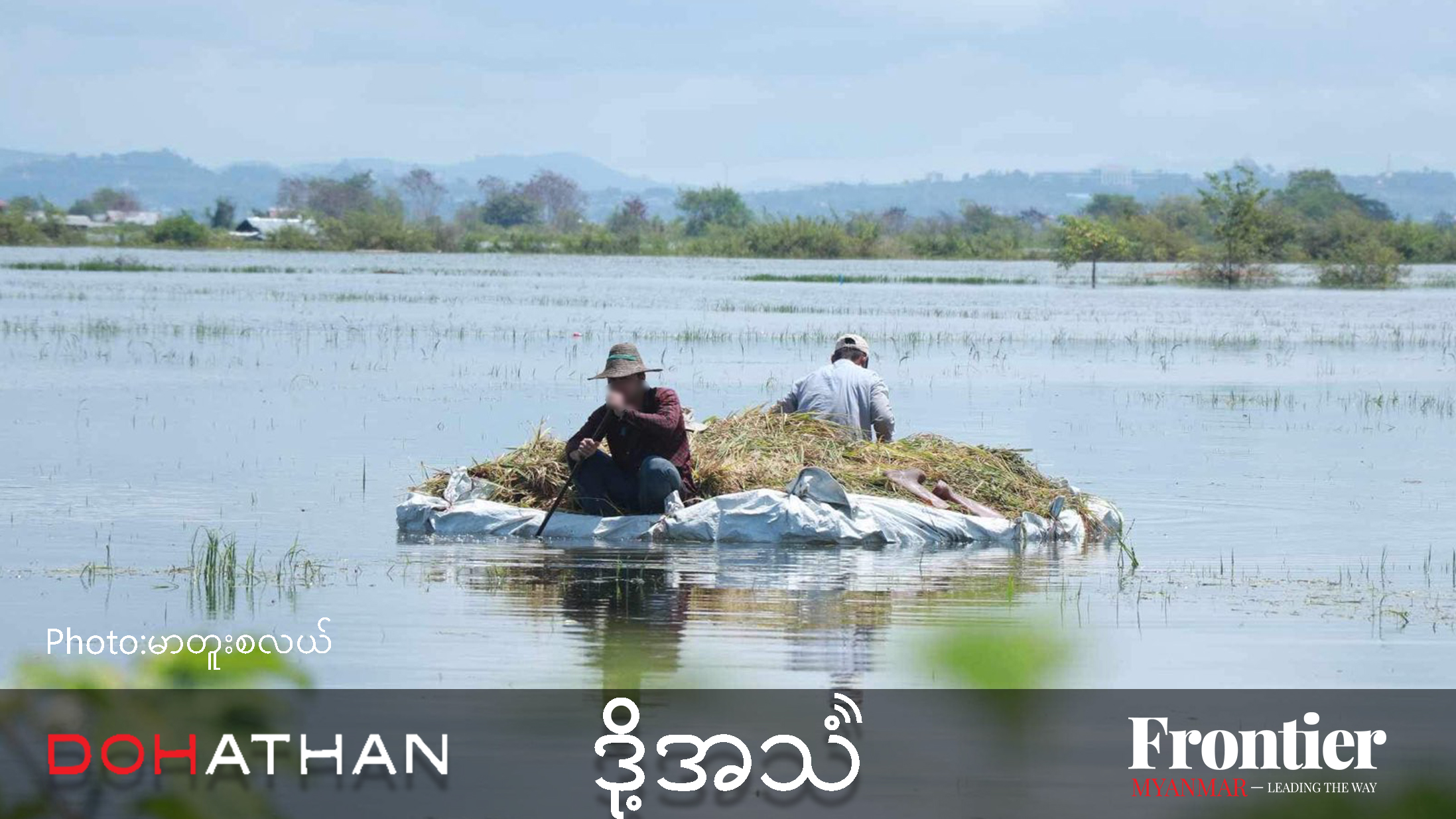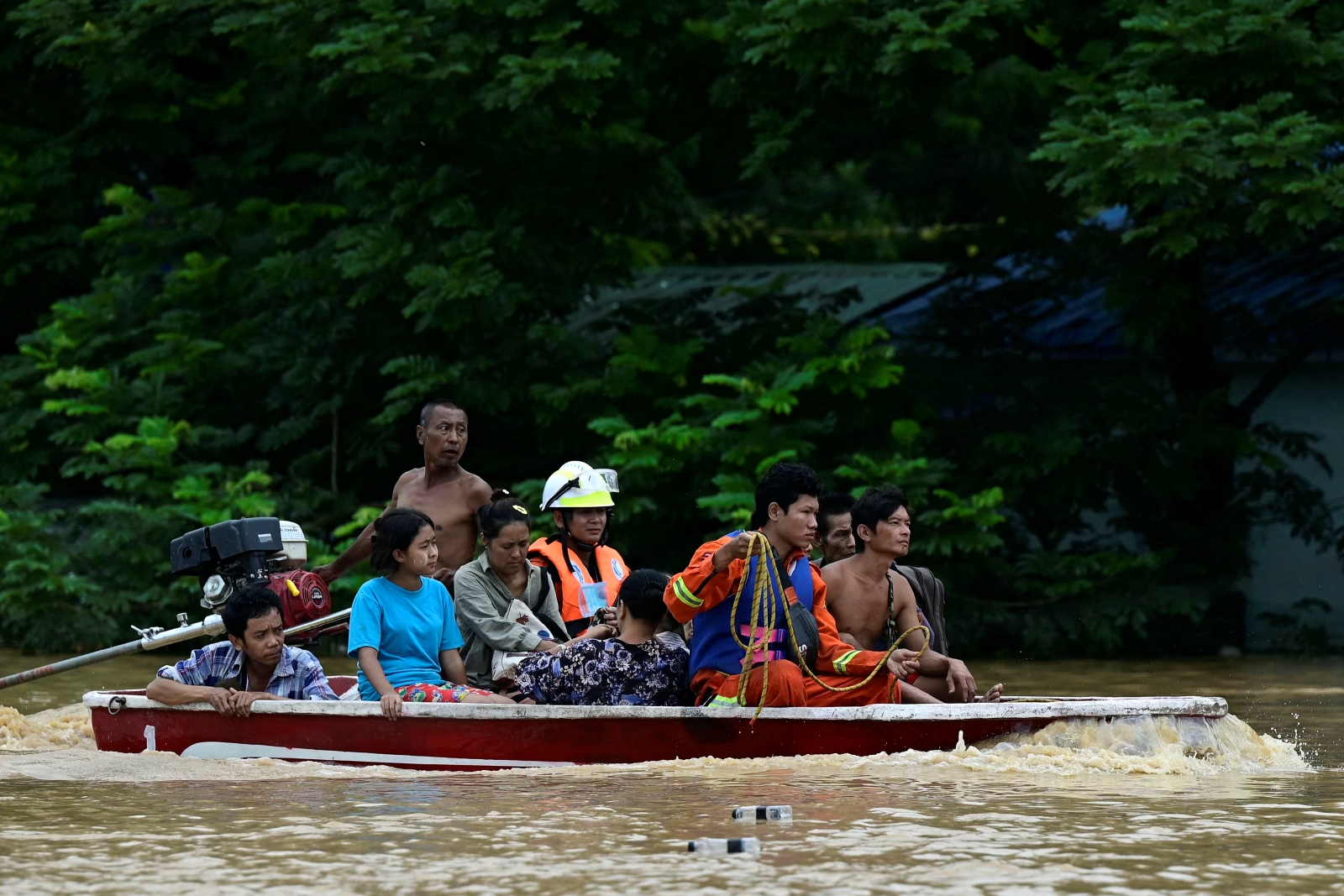Eight months after devastating floods, some villagers in Chin State whose homes were destroyed are moving their entire communities to higher, safer ground.
By OLIVER SLOW | FRONTIER
High in the Chin Hills, a few miles outside the picturesque town of Falam, a man on a motorbike was trying to negotiate a steep, bumpy track, a task made more challenging by big planks of wood tied to the back of the vehicle and tipping it off-balance.
He told Frontier he was moving his home, piece-by-piece, to a new site on top of a hill about two miles away. His village, Tili – a community of a few dozen homes, a school and a church on a valley floor – was destroyed by the floods and landslides.
The landslides swept away two houses in the village, residents said, adding that it was lucky no one died.
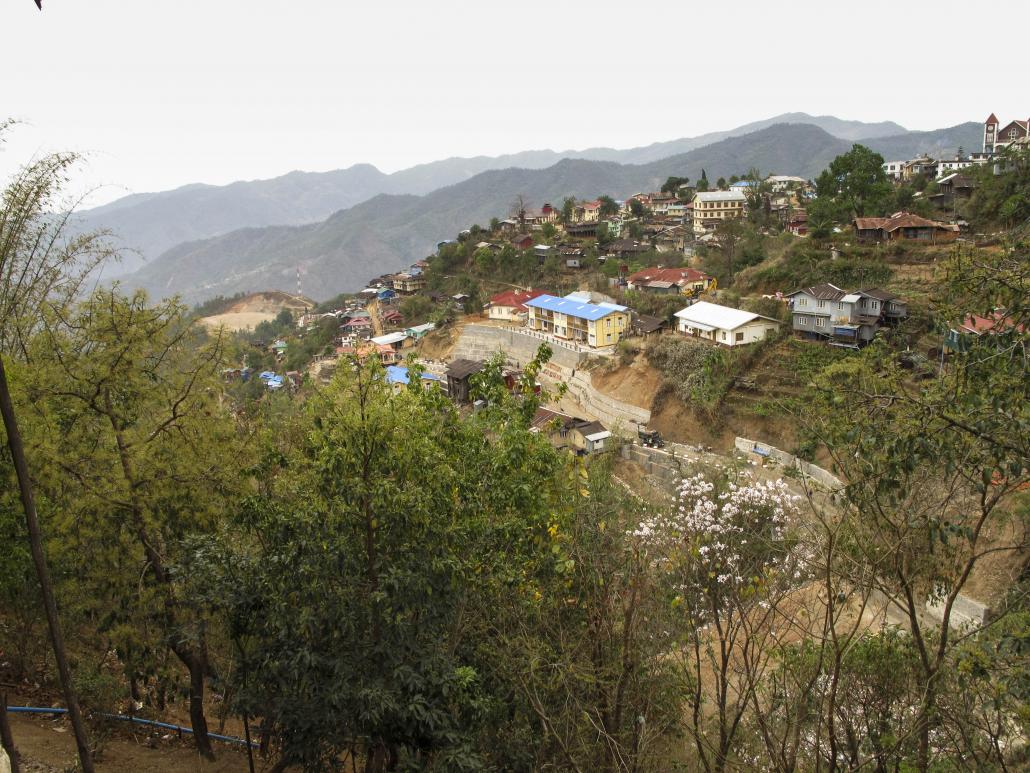
A hilltop view of Falam, Chin State. (Oliver Slow / Frontier)
Support more independent journalism like this. Sign up to be a Frontier member.
Unusually heavy monsoon rain in late July and early August wrought havoc throughout much of Myanmar, leaving hundreds dead, displacing millions and damaging crops and property in 12 of the country’s 14 states and regions. It was the most serious flooding in decades and its impact in Chin and Rakhine states was exacerbated by Cyclone Komen, which roared out of the Bay of Bengal.
Some communities have recovered but many have not. According to data from the United Nations Office for the Coordination of Humanitarian Affairs, more than 3,000 people displaced by the floods in Chin State were living in temporary camps in March.
Salai Lal Than Pui, a member of the Falam Youth Association, a civil society group, said 16 villages in the township, including Tili, are moving to safer ground before the monsoon begins, most of them with no government help.
Further along the track, about a dozen villagers – many in their fifties and sixties – were toiling in the midday heat, dismantling crumbling wooden structures and placing planks of timber into neat piles. It was being carried by hand or motorbike to the “new” Tili at the top of the hill.
Pa Sai Thaung, 56, Tili’s church leader, said it was a race against time to move everything before the rainy season begins.
“When the rains return, it is sure this village will be completely destroyed. I don’t know about the new village, but I hope to never see the same thing again,” he said of the floods and landslides that were the worst he’d experienced.
Sai Thaung laughed as he explained the situation, but it did not hide his anguish at having to leave the home where he was born and had spent his life up until now as a farmer.
“We cannot access our crops on the other side of the hill because of the landslides,” he said, pointing across the valley to fields that once grew maize, the main crop in this quiet and largely forgotten corner of the country. “We have to move our crops, we have to move our home, everything. It’s not easy to start everything again,” he said.
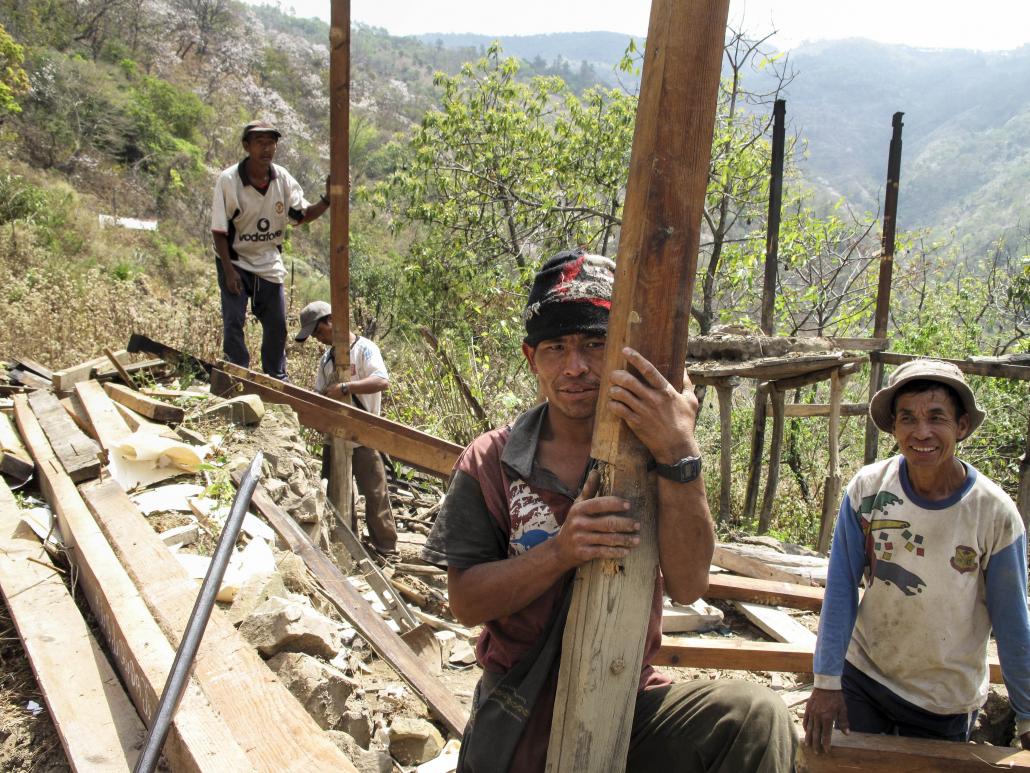
Residents in Tili village have spent seven months moving their properties to a new location after their homes were destroyed in last year’s floods. (Oliver Slow / Frontier)
Some villagers had already begun moving to the new site many years ago, on the advice of the UNDP, which worked in Tili village from 1999 to 2012 as part of its Community Development for Remote Townships Project. At the time the village was made up of 35 households and villagers were told its location was vulnerable to landslides, a UNDP spokesperson told Frontier. By 2012, five households had moved to the new site, UNDP said.
Among those who moved was Nu Thiam Cuai, 56, who had returned to help her friends. Taking a break from her work, she wiped sweat from her brow and pointed to a clearing 15 metres away where the remains of a house were barely visible.
“I was born there,” she said. “Of course it is sad, but we have to move.”
The villagers said they were relying on the goodwill of families and friends to survive. The government has only provided some temporary housing, they said, while friends have provided food, shelter and blankets.
“We only have food because of the support from people,” said Pa Thun Kulh, 61. “We can’t even think about [making a living at the moment]. First we have to move our home to somewhere safe, then we can start thinking about it,” he said. Thun Kulh’s maize crop was also destroyed by the floods and landslides.
In “new” Tili, a calm solitude that washes over the village is in sharp contrast to the hard work being carried out at the bottom of the hill.
A man was hammering nails into the floor of his balcony as he neared completion on the home he’s built from scratch in the eight months since the floods.
“It has been hard work, and I’ve had a lot of help from people” he said. “But once it is finished, I will be finally able to relax,” he said.
Title Photo: Dust falls from a mountainside onto the road connecting Hakha and Falam in Chin State. (Oliver Slow / Frontier)


